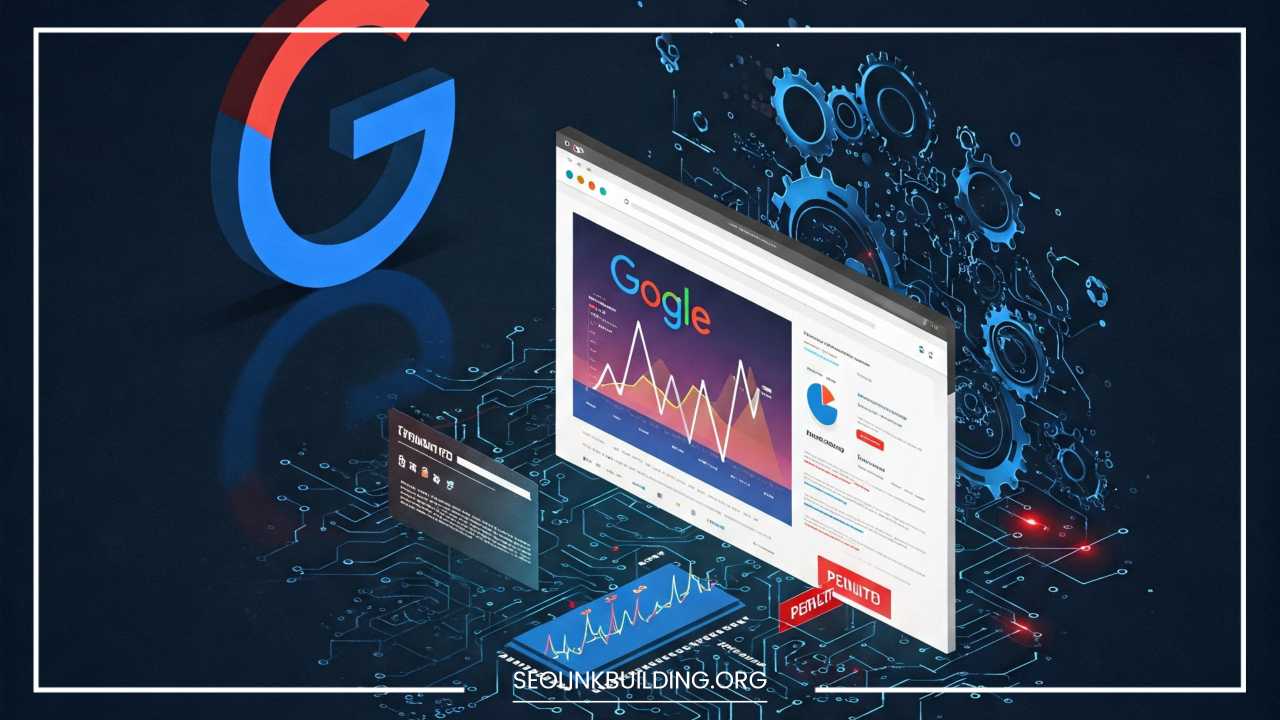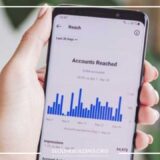Google Penalties: Understand, Avoid & Recover

Google Penalties
The Shadow of the Algorithm: Understanding and Navigating Google Penalties
In the ever-evolving landscape of the internet, where visibility is paramount, Google reigns supreme as the gatekeeper of online traffic.
For businesses and website owners, achieving high rankings on Google’s search engine results pages (SERPs) is a critical objective. However, this pursuit of visibility comes with a set of rules, and failure to adhere to these guidelines can lead to a dreaded consequence: a Google penalty.
A Google penalty is essentially a negative impact on a website’s search ranking or even its complete removal from Google’s index.
These penalties are implemented by Google to ensure the quality and relevance of its search results, ultimately providing users with the best possible experience.
Understanding the intricacies of Google penalties – what they are, why they happen, how to identify them, and, most importantly, how to avoid or recover from them – is crucial for any website aiming for sustained online success.
There are two primary types of Google penalties: algorithmic penalties and manual penalties. While both result in a decrease in a website’s visibility, they differ in their origin and the way they are applied.
Algorithmic Penalties: The Silent Judges
Algorithmic penalties are the more common type and are a direct result of changes or updates to Google’s core search algorithms.
These algorithms are complex sets of rules and formulas that Google uses to evaluate and rank websites.
When Google rolls out a significant algorithm update, it often targets specific ranking factors or practices that it deems manipulative or harmful to the user experience.
These updates can have a profound impact on websites that have been relying on outdated or unethical SEO tactics.
For instance, the Panda update, first introduced in 2011, specifically targeted websites with low-quality, thin, or duplicate content. Websites that offered little to no value to users, often filled with keyword stuffing or scraped content, saw significant drops in their rankings.
Similarly, the Penguin update, launched in 2012, focused on combating unnatural link building practices. Websites that had acquired large numbers of low-quality or paid backlinks from irrelevant sources were penalized.
This update emphasized the importance of earning high-quality, organic backlinks from authoritative websites.
Over the years, Google has released numerous other algorithm updates, each addressing different aspects of website quality and user experience.
Updates like Hummingbird focused on better understanding search intent, while Mobile-First Indexing prioritized the mobile version of a website for indexing and ranking.
More recently, updates like those focusing on Core Web Vitals highlight the importance of website speed, responsiveness, and visual stability for user satisfaction.
The key characteristic of algorithmic penalties is that they are often automatic and can be difficult to pinpoint immediately.
Website owners might notice a gradual or sudden drop in their search traffic and keyword rankings without receiving any direct notification from Google.
Recovering from an algorithmic penalty typically involves identifying the specific issue targeted by the algorithm update and making significant improvements to the website in those areas.
This could mean creating high-quality, original content, disavowing unnatural backlinks, improving website loading speed, or ensuring mobile-friendliness.
Manual Penalties: A Direct Intervention
In contrast to algorithmic penalties, manual penalties are issued by Google’s human reviewers. These penalties occur when a website violates Google’s Webmaster Guidelines in a way that requires direct intervention.
Google’s team of reviewers manually assesses websites and takes action when they identify practices that are clearly manipulative or harmful.
When a manual penalty is applied, website owners typically receive a notification in their Google Search Console account, outlining the specific violation and the impact on their website’s visibility. This direct feedback provides a clear understanding of the issue that needs to be addressed.
There are various reasons why a website might receive a manual penalty. Some common examples include:
- Unnatural links to your site: This is similar to what the Penguin algorithm targets, but manual reviewers might identify patterns of unnatural link building that the algorithm hasn’t yet caught. This could involve paid links, link farms, or excessive reciprocal linking.
- Unnatural links from your site: If a website is linking out to low-quality, spammy, or irrelevant websites in an excessive manner, it could also attract a manual penalty.
- Thin content with little or no added value: This echoes the Panda update, but manual reviewers might identify specific pages or sections of a website that are particularly lacking in substance or originality.
- Cloaking and sneaky redirects: These deceptive practices involve showing different content to search engine crawlers than what is presented to users. This is a serious violation of Google’s guidelines.
- Hidden text and/or links: Intentionally hiding text or links on a page to manipulate search rankings is another practice that can lead to a manual penalty.
- User-generated spam: If a website’s forums, comment sections, or guestbook are filled with spammy or irrelevant content, and the website owner is not actively moderating it, a manual penalty might be issued.
- Structured data issues: Incorrect or misleading use of structured data markup can also result in a manual penalty.
- Mobile issues: If a website has significant usability issues on mobile devices that violate Google’s guidelines, a manual review might lead to a penalty.
Recovering from a manual penalty involves carefully reviewing the notification in Google Search Console, identifying and fixing the specific issues mentioned, and then submitting a reconsideration request to Google.
In this request, the website owner needs to explain the steps they have taken to address the violations and demonstrate that their website now complies with Google’s guidelines. The reconsideration process can take some time, and there is no guarantee that the penalty will be lifted.
Identifying Google Penalties: Recognizing the Signs
Whether it’s an algorithmic or manual penalty, the primary indicator is a noticeable decline in a website’s search engine performance. This can manifest in several ways:
- Sudden drop in organic traffic: A significant and unexplained decrease in the number of visitors coming from Google search is a strong sign of a potential penalty.
- Loss of keyword rankings: If a website suddenly drops in rankings for its target keywords, especially if it was ranking well previously, it could be due to a penalty.
- De-indexing: In severe cases, Google might completely remove a website or specific pages from its search index. This means the website will no longer appear in search results at all.
- Manual action notification in Google Search Console: For manual penalties, Google will directly notify the website owner through the “Manual actions” report in Google Search Console. This is the most direct and clear indication of a penalty.
- Warning messages in Google Search Console: Sometimes, Google might issue warning messages in Search Console about potential issues that could lead to penalties if not addressed.
It’s important to note that fluctuations in search traffic and rankings are normal. However, a sudden and substantial drop, especially when accompanied by other indicators, should prompt a thorough investigation into potential penalties.
Recovering from Google Penalties: The Path Back to Visibility
Recovering from a Google penalty can be a challenging and time-consuming process, but it is often possible with careful effort and attention to detail. The steps involved in recovery depend on the type of penalty:
For Algorithmic Penalties:
- Identify the triggering algorithm update: Research recent Google algorithm updates to see if any align with the timeframe of the traffic or ranking decline.
- Analyze your website for potential issues: Based on the identified algorithm update, thoroughly review your website’s content, backlink profile, technical SEO, and user experience.
- Make necessary improvements: Address the identified issues. This might involve rewriting or removing low-quality content, disavowing unnatural backlinks using Google’s Disavow Tool, improving website loading speed, optimizing for mobile devices, and fixing technical errors.
- Monitor your progress: After making the necessary changes, closely monitor your website’s traffic and rankings over time. It can take weeks or even months for the effects of the improvements to be reflected in Google’s search results. There is no direct way to notify Google about algorithmic penalty recovery.
For Manual Penalties:
- Carefully review the manual action report in Google Search Console: Understand the specific violation(s) identified by Google.
- Fix the identified issues: Take concrete steps to address the violations. This might involve removing unnatural links, improving thin content, removing cloaking or hidden text, or addressing structured data errors.
- Document your efforts: Keep a detailed record of the actions you have taken to resolve the issues.
- Submit a reconsideration request: Once you are confident that you have addressed all the violations, submit a reconsideration request through Google Search Console. In this request, clearly explain the steps you have taken and demonstrate that your website now complies with Google’s guidelines. Be honest and transparent in your communication.
- Be patient: The reconsideration process can take several days or even weeks. Google’s team will review your request and determine whether to lift the penalty.
- Follow up if necessary: If your reconsideration request is denied, carefully review Google’s feedback and make further improvements before submitting another request.
Preventing Google Penalties: Staying on the Right Side of the Algorithm
The best approach to dealing with Google penalties is to avoid them in the first place. By adhering to Google’s Webmaster Guidelines and focusing on providing a positive user experience, website owners can significantly reduce their risk of being penalized. Here are some key practices to follow:
- Create high-quality, original content: Focus on providing valuable, informative, and engaging content that meets the needs of your target audience. Avoid thin, duplicate, or auto-generated content.
- Build backlinks naturally and ethically: Earn backlinks from reputable and relevant websites through genuine outreach and by creating valuable content that others want to link to. Avoid buying links, participating in link schemes, or engaging in other manipulative link building practices.
- Ensure a positive user experience: Make sure your website is fast-loading, mobile-friendly, easy to navigate, and free of intrusive ads or pop-ups.
- Maintain good technical SEO: Optimize your website’s structure, crawlability, and indexability. Fix broken links, ensure proper use of robots.txt and sitemap files, and implement HTTPS.
- Use structured data appropriately: If you use structured data markup, ensure it is accurate and reflects the content on your pages.
- Monitor your website regularly: Keep an eye on your website’s performance in Google Search Console and address any warnings or issues promptly.
- Stay updated on Google’s guidelines and algorithm updates: Regularly review Google’s Webmaster Guidelines and stay informed about any announced algorithm updates to ensure your website remains compliant.
Final Thoughts: Navigating the Complexities of Google’s Rules
Google penalties are a significant concern for website owners, as they can have a devastating impact on online visibility and traffic.
Understanding the different types of penalties, the reasons behind them, and the steps involved in recovery is essential for navigating the complexities of Google’s search algorithm.
While recovering from a penalty can be a challenging endeavor, the best strategy is always prevention. By prioritizing high-quality content, ethical SEO practices, and a positive user experience, website owners can build a strong foundation for long-term success in Google’s search results and avoid the dreaded shadow of the algorithm.
Remember that Google’s ultimate goal is to provide users with the most relevant and helpful information, and aligning your website’s goals with this principle is the key to staying on the right track.
As Google continues to refine its algorithms and refine search results, keeping your website’s practices in line with the evolving expectations will ensure that your online visibility remains strong, steady, and free from penalties.
The digital landscape is competitive, but by adhering to best practices and staying ahead of algorithm updates, you can ensure that your website not only survives but thrives in the competitive world of search.













